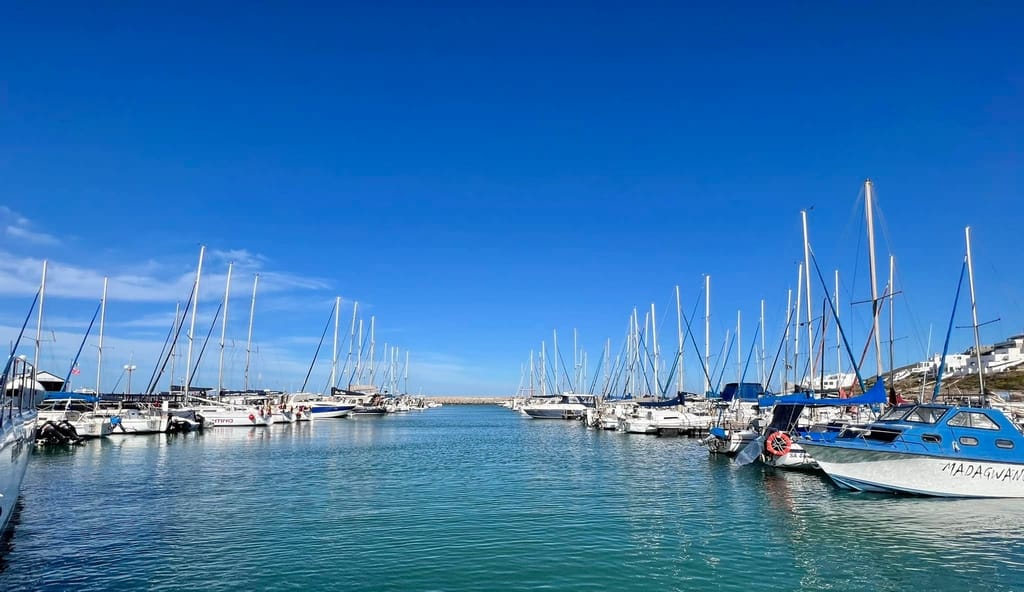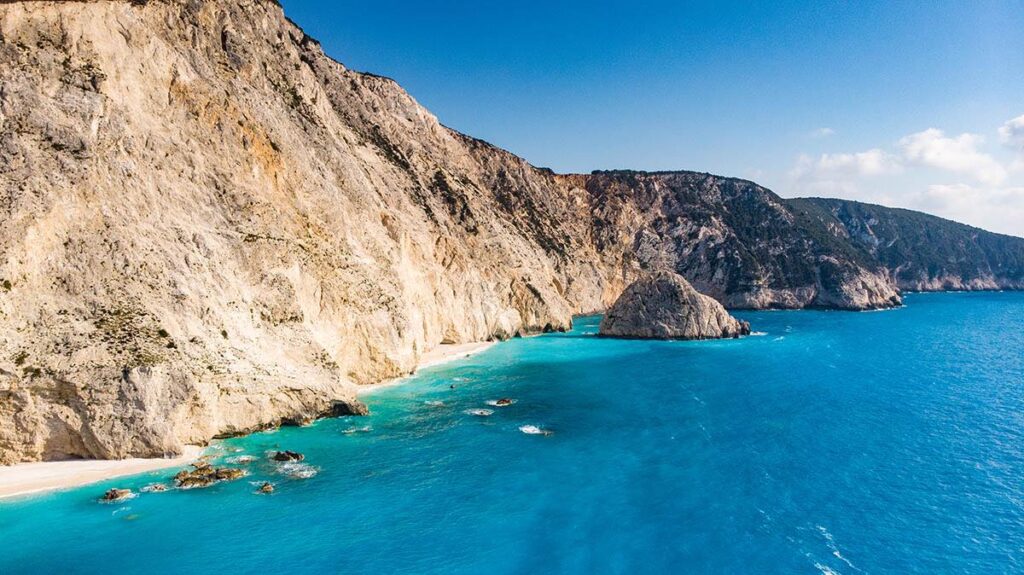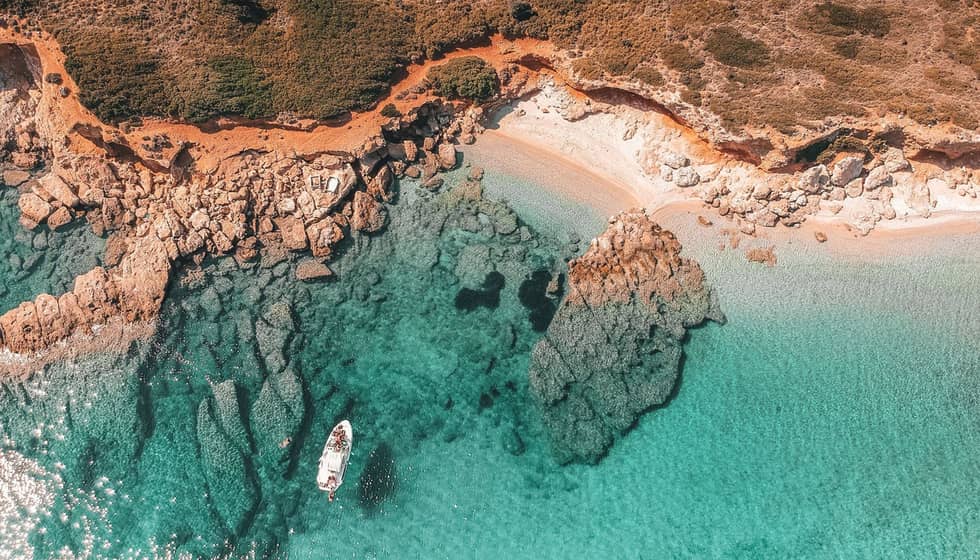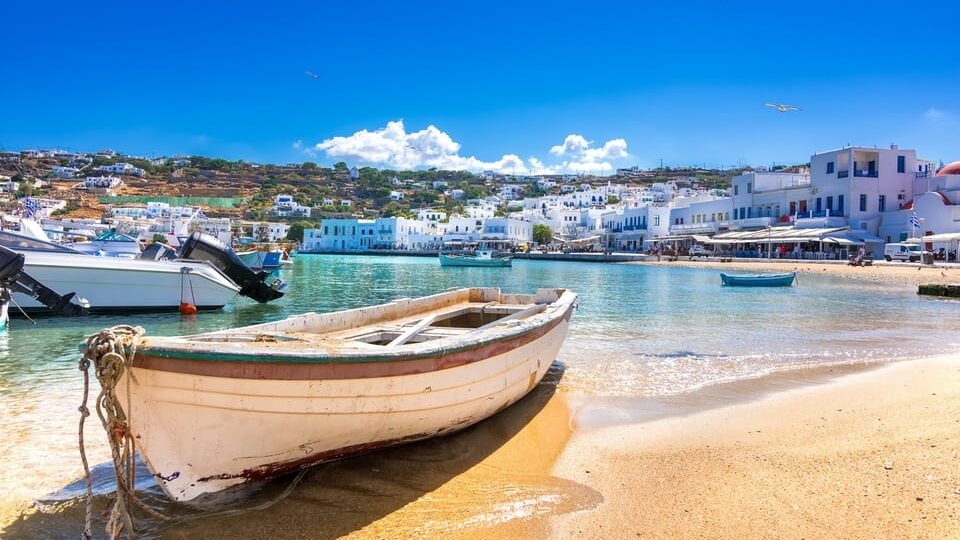Best Sailing Destinations in Greece
Greece is one of the most beautiful countries in the Med and a must-sail destination. The Greek Islands have something to offer practically to every sailor and visitor. The main reasons why Greece is such a favorable sailing destination is because of its mild and sunny climate, numerous islands, and hospitable people. Sail amid whitewashed coastal communities, enjoy exquisite cuisine, and receive genuine hospitality. The Greek Islands, with their unending shorelines, appear to have been designed for sailing. From the Cyclades to the Sporades, the Dodecanese, to the Ionian Islands but also the southern coastline in Greece, you have plenty of destinations to choose from. In this article, I will list the best sailing destinations in Greece in order to give you some ideas about your sailing voyage there. Follow me!
The Cyclades
The Cyclades are an important sailing destination because of their turquoise seas, golden beaches, and the numerous sailing and cultural experiences one can find there. They are Greece’s most famous island chain, with enchanting white villages, hidden coves, and beautiful blue waters. This is due to the fact that they offer both natural beauty and enjoyable sailing vacations. Apart from the well-known Mykonos and Santorini islands, the same group includes a number of other Greek islands. The islands are known for their rocky landscape, turquoise waters, amazing food, and hospitable people. The Cyclades islands require intermediate to advanced sailing skills and expertise. Weather and wind can be tough at times, depending on the season you’re sailing.
Santorini
Santorini, also known as Thera in Greek, is a volcanic island that enthralls visitors with its beautiful beaches, delectable cuisine, and breathtaking sunsets. Its multicolored cliffs have unmistakable renown. Once you’ve disembarked from your boat, make sure to swim at the exotic-colored beaches of Kokkini Paralia, Aspri Paralia, and Perivolos. Furthermore, consider exploring the islets surrounding the caldera, particularly Thirasia, to get a sense of how Santorini looked 50 years ago. Scuba diving in volcanic waters and uncovering the wreckage at Taxiarchis is a highlight for sports enthusiasts. And, don’t omit the experience of watching the sunset from Skaros or the Akrotiri lighthouse and have dinner in picturesque Oia village.
Naxos
Naxos is a sailing destination with gorgeous crystal clear waters, medieval castles, and delectable cuisine. Furthermore, the historic Portara, a gigantic marble entrance, and the vista of the medieval castle above the town greet visitors as they reach the harbor. Once on Naxos, you must see the kouri, which are huge, half-finished statues of young men that can be found in Melanes’ garden. Windsurfing is available at Mikri Vigla beach for sports enthusiasts. Foodies will like the graviera and kefalotiri cheese, and nature lovers have to visit the Tragea Valley in the center of Naxos. Make sure you get a glass of kitro, a liqueur made from citron leaves.
Koufonisia
Koufonisia, which is ideal for sailing, allows you to get to know and enjoy Koufonisia and the adjacent deserted islets. If you have a boat, there is a lot to do around Koufonisia. There are many beaches to which land access is difficult, making them ideal for boaters. There is a marina in Pano Koufonisi which provides all the basic amenities. Koufonisia is a location for people wanting peace and quiet, as well as the opportunity to be alone in a natural setting under the sun, with only the seagulls for company. It’s worth visiting Xylobatis Cove, with its two sea caves, which is located north of Pori Cove.
Kato Koufonisi is a small nearby island from Pano Koufonisi. The beaches of Lakki, Detis, Nero, and Pezoulia are very popular during the summer months. Sailing around the island allows you to admire its beauty while also discovering additional little, stunning beaches that are impossible to reach on foot.
Amorgos
Amorgos is a beautifully untouched island in the Cyclades group’s south-eastern corner, where traditional customs are still inextricably entwined into a landscape as beautiful as its rich history. The naked rocky island of Amorgos will take your breath away with its very pure turquoise waters, picturesque white and blue alleyways, but occasionally harsh winds. It’s a necessity to anchor at the Fjord Bay, as well as visit and swim in Kalotaritissa Bay. You can also anchor at the adjacent islet of Gramvousa. Consider strolling around Chora, the island’s largest “town,” and see the famed and iconic monastery of Panagia Hozoviotissa.
Milos
Milos is the southwesternmost island in the Cyclades group. Volcanic activity has created an interesting array of stunning landscapes on this island in the past. The unusual formations of the rocks and their spectacular tints on the gorgeous white sandy beaches are one manifestation of Milos’ volcanic qualities; another is the economic activity, where minerals such as obsidian, sulfur, kaolin, and others are dug. As a result, Milos is home to one of the Mediterranean’s oldest mines. The greatest anchorages are Dimitrios Cove, Megali Ammos, and Fatourena. Also on the south coast, the bays of Tsigrado and Fyriplaka feature a beautiful seascape and decent protection from the northerlies.

>>Also Read: Cyclades Islands Sailing Destinations
The Ionian Islands
The Ionian islands have a more pleasant climate with more foliage, rain, and tranquil waves. They also have the fewest strong winds of any place in Greece. The Ionian Islands are Greece’s most well-known sailing destination. For culture lovers, you may know that Odysseus’ home island was Ithaca. It’s a great spot for sailing with kids, and it’s also suitable for inexperienced sailors. Keep in mind that the Ionian Islands will be crowded during the peak season. As a result, docking your boat may be quite difficult. So, it is advisable to sail in May or September there.
Corfu
The Corfu bays and coves with emerald carpets of trees strewn across the slopes are among Greece’s most picturesque. Sand beaches and picturesque fishing villages add to the natural splendor. Venetian palaces and fortifications combine in a unique way in small alleyways. Strolling through the so-called kantounia, a maze of narrow cobblestone lanes with stairways and arched vaults can transport you to old Italy. Visit Kalami, a fishing village on Corfu’s northeast coast, as well as Sivota Mourtos, a beach town. Anchor your boat in Petriti Harbor and have a stroll through the island’s historic center.
Lefkada
Because of its central location in respect to the other islands and the accessibility offered by a floating bridge, Lefkada is a good starting and stopping point for sailing the western part of Greece. Consider visiting Vasiliki Bay if you enjoy windsurfing, but be wary of the severe gusts. Strong winds from the northwest to the northeast are common in Syvota, therefore instead of anchoring, go stern to the quays or pontoons. To the northeast of Sivota, the bay of Rouda / Mikros Gialos offers more bucolic anchorages, while severe gusts are probable. A beautiful cove can be found on the other side of the fishing port. Swim in Milos, a beautiful beach in exquisite surroundings on the island’s northern shore, near to the settlement of Agios Nikitas, the island’s sole village at sea level. A must-see beach, Ammoudoula, and the spectacular cave Fokotrypa are both close to Agios Nikitas.
Ithaca
Ithaca; the island of history, myth, and greenery. Vathy, a sheltered harbor that was constructed by the Romans, is beautifully situated on a bay. Note that severe gusts can be visible at Aetou bay turning from the SW to the NW in Vathy bay or W over the Cave of Nymphs hills. Vathi’s harbor is considered one of Greece’s safest natural harbors. Frikes, a magnificent stretch of white sand and a bay north of Ithaca, is a must-see. Remember that the optimum mooring is west of the islet of Lazareto. If you have the time and stamina, wandering through the greenery of Ithaca is a great way to see the island; enjoy lunch or dinner in a local taverna, meet the friendly residents, and just relax aboard.

>>Also Read: Best Sailing Routes in Greece
Sporades Islands and Evoia
The Sporades Islands are located off the northwest coast of the Aegean Sea. Within a tiny island territory, it’s a sailing destination with a lot of beauty and an amazing range of wonderful beaches. The islands, which are located north of Evia, are a group of lushly vegetated islands with high topography, making them some of Greece’s greenest. There are a total of 24 islands, however, only four are inhabited. Alonnisos, Skiathos, Skopelos, and Skyros are the names of the islands. They’re well-liked sailing spots. The Sporades may not be the ideal place to see ancient ruins, but it is one of the few islands where you may relax aboard or ashore in the natural shade of pine trees that run down to the sea.
Alonnisos
The National Marine Park of Northern Sporades, a haven for rare seabirds, dolphins, and the Mediterranean monk seal, is located on the island, which is the most distant of the Northern Sporades island group. When you arrive on the island, you will see Patitri, the scenic harbor, and capital of the island. There is a stunning stone-paved shoreline that got its name from the wine presses used by the residents, who were primarily engaged in wine production. Hóra (or Old Village) is the island’s former capital.
Skopelos
Skopelos is one of the North Sporades’ islands, with three ports, Skopelos, Glossa, and Agnontas. A virgin pine forest covers more than half of the land. Skopelos doesn’t just have one sort of beach; it has them all. Pebbly coves, sandy bays, and rocky cliffs make up the coastline here. The south and west beaches have some of the nicest expanses of sand, however, they can grow crowded in the summer. Don’t leave Skópelos without trying the famous local cheese pie, a delectable delicacy consisting of crunchy spiral pastry with local goat cheese.

>>Also Read: Best Marinas in Greece
Evoia
Evia is a seahorse-shaped island that stretches 180 kilometers along the mainland of Greece from just above the Northern Cyclades to Thessaly, making it Greece’s second-largest island by size and population. The Gulf of Evia, which connects Evia to mainland Greece, is not a popular cruise destination. This gulf’s waters are less pure than those of the Aegean. Many boats choose to travel from Athens to the Sporades islands via the more protected gulf.
However, as Evoia isn’t a popular tourist destination it has still preserved its natural beauty. Even though industrial development has destroyed a big part of the islands there are still so many places to explore. From deserted sandy beaches only accessible by boat, waterfalls, forests, mountainous villages, and of course numerous hiking trails in Dirfys mountain. If you want to see Greece’s other side and explore a less tourist destination, Evoia is the place to be. Lastly, due to the catastrophic fires in July 2021, Evoia is now more than ever in need of visitors that can support local communities and contribute to nature’s revival.
